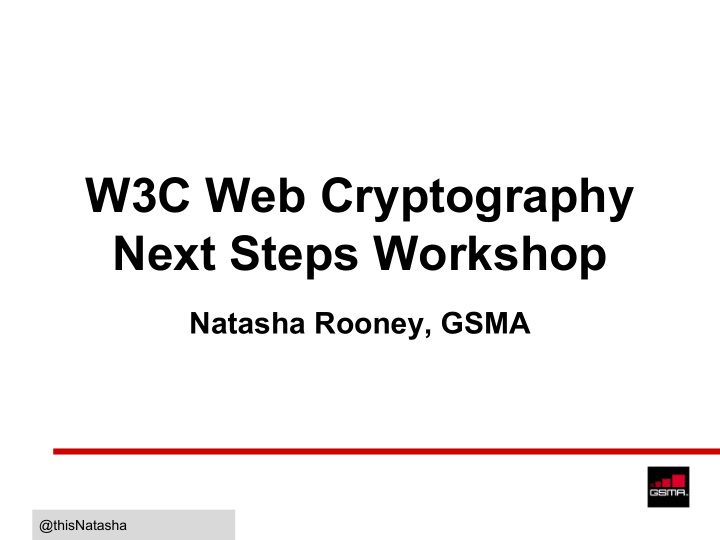



W3C Web Cryptography Next Steps Workshop Natasha Rooney, GSMA @thisNatasha
GSMA: Telecoms Association @thisNatasha
GSMA: Telecoms Association ● Personal Data Programme ● Digital Commerce Programme ● WebWG @thisNatasha
@thisNatasha
➔ Anonymous Login ➔ Secondary Authentication ➔ Validated Login ➔ Identity Validation ➔ Mobile Signature ➔ Attribute Brokerage @thisNatasha
Mobile Connect & UICC Some Mobile Connect services use the SIM (UICC) as a Hardware Token: Small programs (or “applets”) to be stored and run directly from the UICC (SIM Applet) @thisNatasha
Mobile Connect & UICC Some Mobile Connect services use the SIM (UICC) as a Hardware Token: The SIM applet manages authentication. It holds one or many pre- installed Authentication Methods The Authentication Server can invoke these methods to authenticate the end-user. (SIM Applet) @thisNatasha
SIM Applet: Security Benefits ● Attacker needs to have possession of the user’s device (and possibly a passcode) ● User is alerted to attempts to access their online account ● Limited number of parties have access to write or read from the SIM. Disadvantage of using the SIM: requires applets to be written at the point of manufacture? Size of the Applet? @thisNatasha
Future Work Secure Storage: Possible solution is hardware storage on the device. Secure Processing: Hardware Tokens can also be used for secure processing Standardising Cryptography support on Hardware Tokens: together with an API for accessing and using cryptographic keys, secrets or credentials (etc.). Assuring Security Prior to Issuing a Token: some further questions need to be answered: ● How can we authenticate a user before a token is issued to a device? ● What checks can be completed to ensure the device is 'safe' prior to the token being downloaded? ● Is the user in control of the device, does the device need to be unlocked to receive tokens or does the user or system specifically request these? @thisNatasha
Thank-you @thisNatasha
Recommend
More recommend